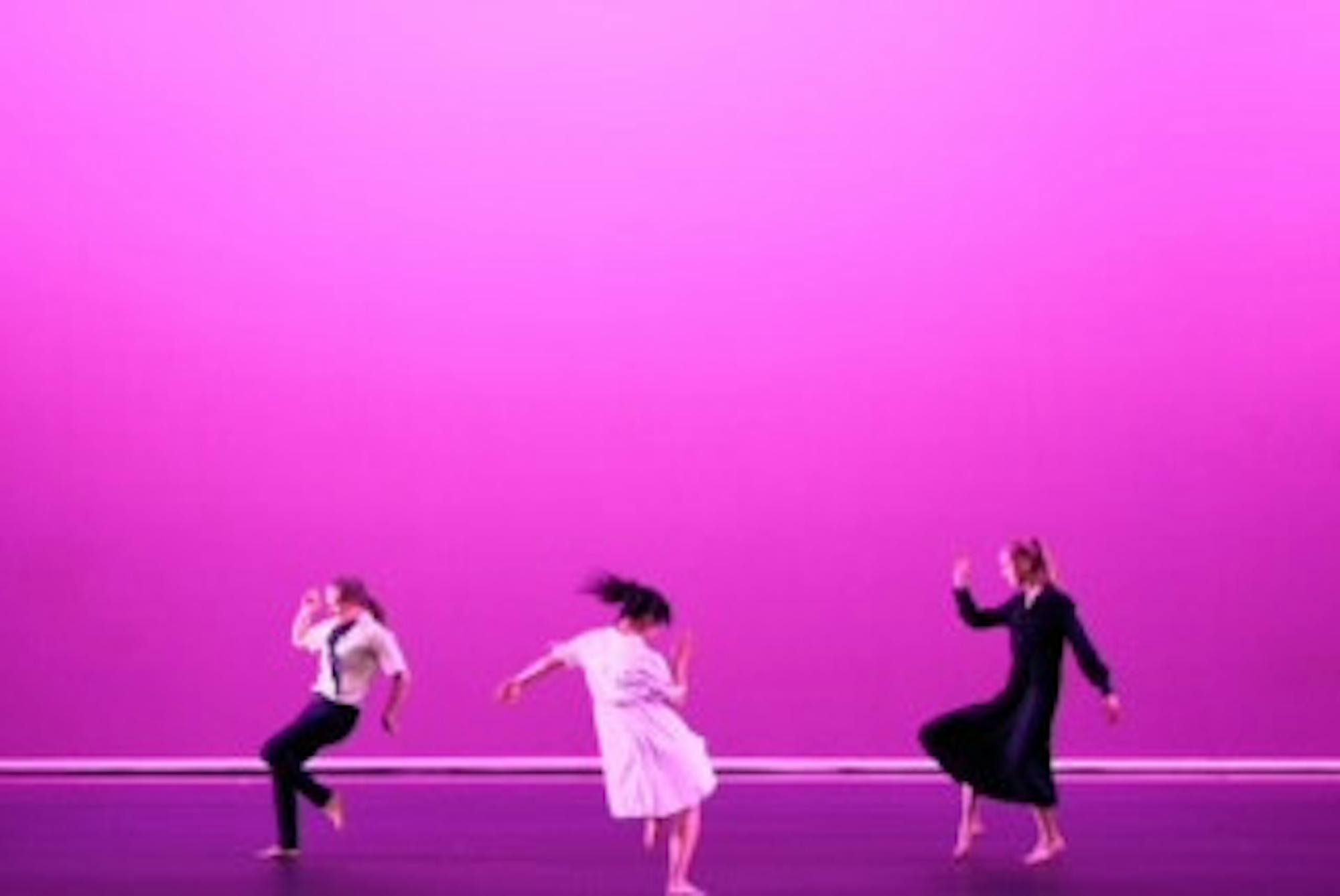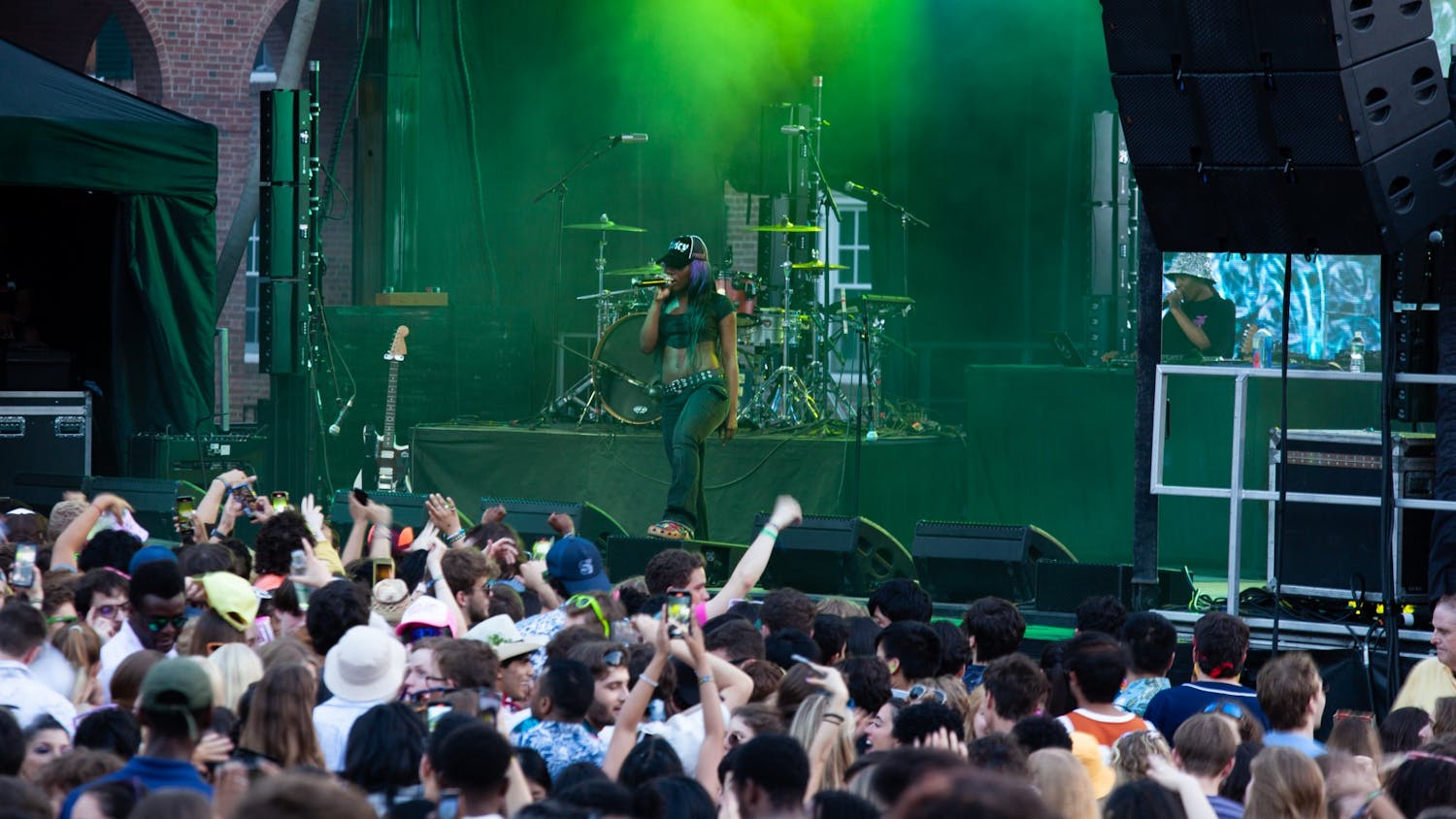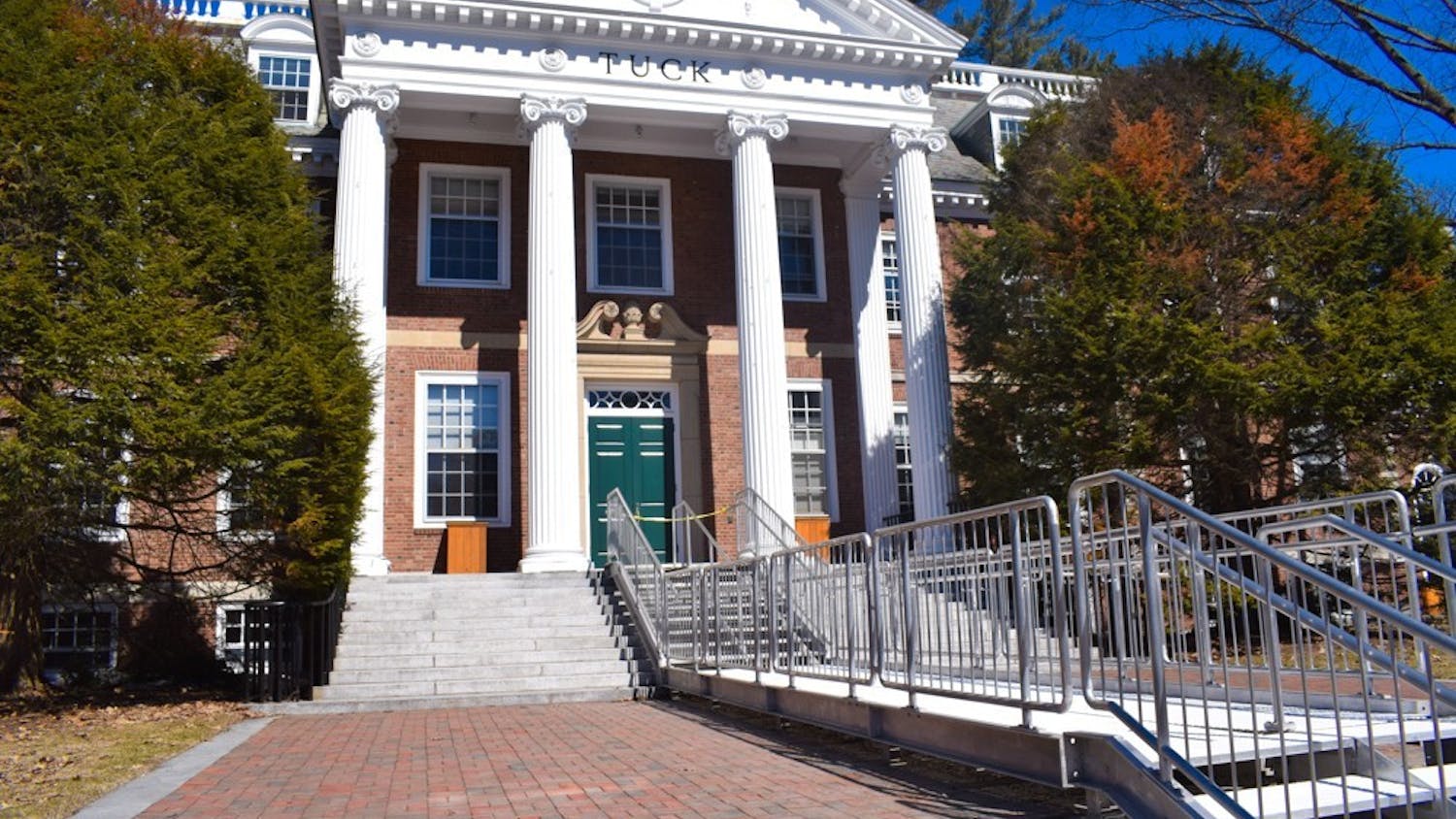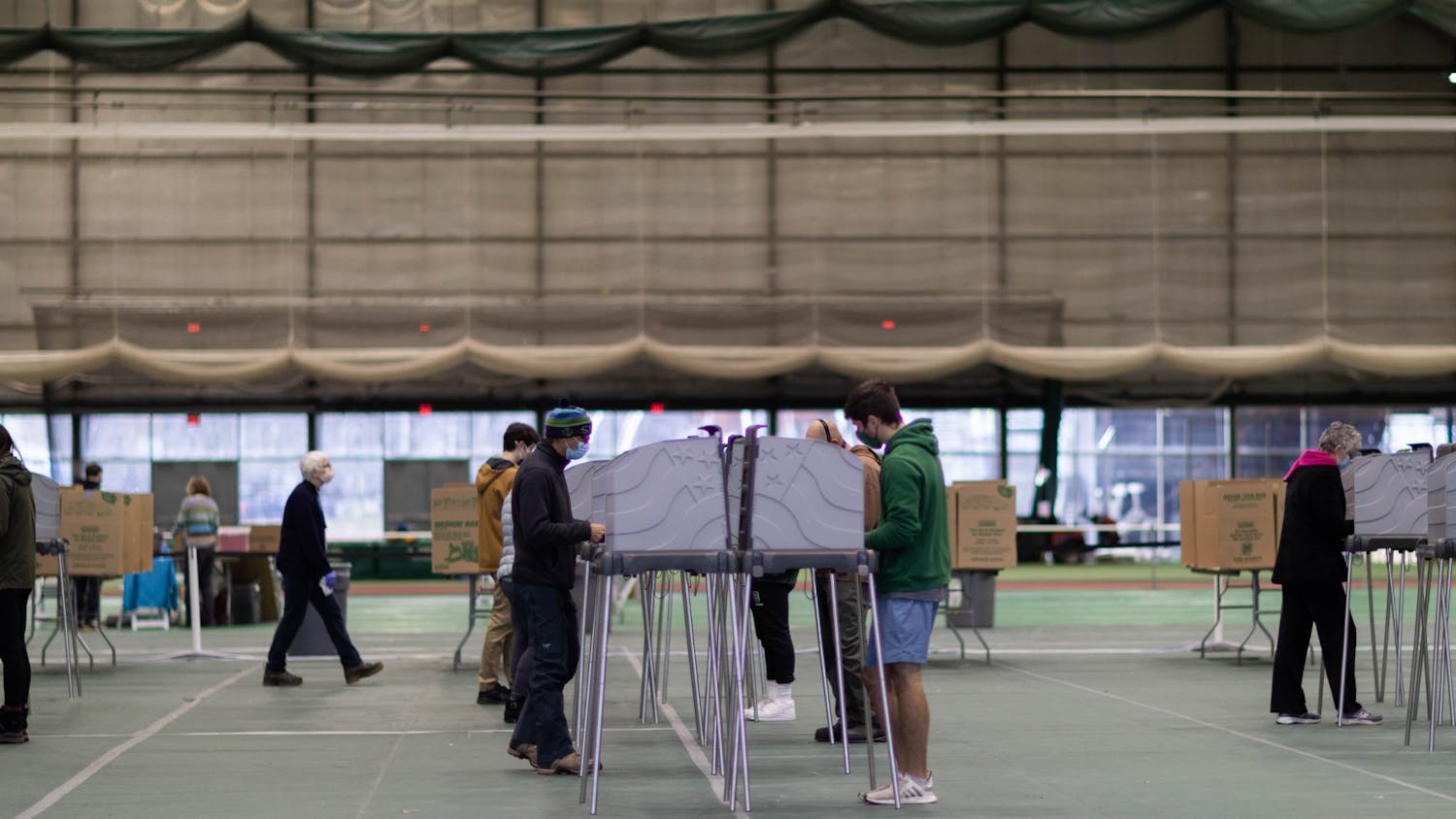The Dartmouth Dance Ensemble will hold their annual May performance this Saturday in the Bema at 1 p.m. and 4 p.m. The performance, titled “A Spring Day,” will feature original choreography by professional and student choreographers and will showcase a variety of dance styles.
Several members of the ensemble — a professionally run dance group composed of Dartmouth students, staff and community members — will be presenting original dances, including Jessica Volan Trout-Haney ’17, Rachel Hsu ’23 and Roman Olavarria ’23
Rebecca Stenn, the ensemble’s choreographer-in-residence for the past nine years, stressed that the show is “really multi-genre.” The performance will feature a blend of live and pre-recorded music spanning a diverse set of genres including jazz, classical and environmental ambient music.
Ensemble director John Heginbotham said the performance is a culmination of the Ensemble’s work throughout the year.
“We generally prepare all of the dances throughout the entire academic year,” Heginbotham said. “And we do showings of those dances as they are in progress [in the fall and winter] … So we work the entire year creating and cataloging these dances which then all come into fruition in their highest form and with their most production value [in the spring].”
Stenn said the year-long preparation leading up to the ensemble’s performance allows the performers to fully learn and experience the dance.
“That’s a long amount of time so that things can really percolate and build and grow. And the dancers can really become very comfortable with the material and their bodies — almost like a muscle memory,” Stenn said. “I think it’s a really rich experience because you’re not concerned about what’s coming next so you can really dig deeper into performance mode.”
Hsu, who is choreographing pieces for the show, explained that having a year-long preparation process still comes with challenges.
“Every term we have slightly different people. I think one of the challenges is reworking the piece every time because you’re usually working with a different number of people,” Hsu said. “Because there’s a big difference between a three-person piece versus a four-person piece versus a five-person piece.”
In past years, the performance has been in the Moore Theater, but given the construction on the Hopkins Center for the Arts, it will take place in the Bema this year.
The Bema’s circular shape impacted how the ensemble prepared for and choreographed the performance, according to Stenn.
“We’ve had to rethink the choreography not just in a proscenium sense where there’s one front. Now there’s more fronts,” Stenn said. “It’s been really something that’s quite fun to dig into and question, ‘How do we make this work? How does [the choreography] look like from this angle and this angle and this angle?’”
Heginbotham said the change of location will influence the audience’s experience.
“In the Moore, we had a traditional [performance set-up] where the audience all faced one direction. In Bema, we are going to perform this concert in the round so audiences will be on all sides,” Heginbotgham said. “So every audience member is going to have a very specific, individual experience of the show because every perspective is going to be greatly different.”
Heginbotham also said that the new venue will make the experience more intimate for the audience than it would have been in Moore Theater.
“What is inspiring for this particular performance is the idea of the community. We're going to be experiencing the show basically in a circle so we’re all together,” Heginbotham said. “The dancers will also be passing through the audience on their way to get to the stage.”
Student choreographers are expected to come up with dance pieces and run their own rehearsals.
Reflecting on her experience as a student choreographer for the ensemble, Hsu stressed the positivity of the Dance Ensemble community.
“Students that do DDE have a really good attitude. They’re in it because they care about artistry and being part of a creative process,” Hsu said. “If you have people that are open-minded, you feel like you can share your work in a very positive environment. That’s possibly because DDE does not have one specific style or one specific dancer.”
Students of THEA 29: “Dance Theater Performance” will also be choreographing and performing with the ensemble. Taught by Heginbotham and Stenn, the course focuses on applying movement theories and techniques to develop a final culminating performance.
“The idea of the whole course is based on this premise of making a piece,” Stenn said. “We’re making a work from start to finish with whoever is in the room. Nothing is there where we start, but by the end of the term we have a piece.”
Olavarria explained that the Dartmouth Dance Ensemble differs from other dance groups on campus, emphasizing its “collaborative” identity.
“Even though it’s professor-run, it’s a much more collaborative space to create a piece because the professors do want some insights into how the piece feels,” Olavarria said.
Unlike student dance groups, the Dartmouth Dance Ensemble is open to the greater Dartmouth and Upper Valley community, Hsu explained.
“One of the cool things about DDE is that the ensemble includes students but it also includes people who are not undergrads,” Hsu said. “One of our members is a Jewelry Studio Instructor and one of them is a postdoc. So it’s been cool to get to work with both students and non-students alike.”
In addition to the dance performances, student musician Hannah C. Kim ’23 will offer a live cello accompaniment to several pieces. Heginbotham said that the presence of the cello helps represent the theme of community present throughout the whole show, despite each dance being an individual piece.
“While the individual dances do exist [independently], there is a throughline of the community [theme] always present,” Heginbotham said. “We also are giving that impression through the music, which is also very eclectic, but throughout the entire show there’s a throughline of cello music.”
This collaborative sense affected many of the ensemble members, and Olavarria explained how the use of live music impacted his creative process.
“We get to do some very different things when we work with live music. The first thing I noticed is that there are very big tone shifts [with live music],” Olavarria said. “Even though it’s the same song, each player plays it differently, even slightly, which I believe has a significant impact on the tone and how I feel about the dance.”
Olavarria also described how live music is able to more intimately complement a dance piece.
“I was also able to edit the music a bit more to go along with the choreography. The biggest change I made [is deciding] to hold the silence longer [than in the original music] because it went along with how I like to feel about creative movement,” Olavarria said.




